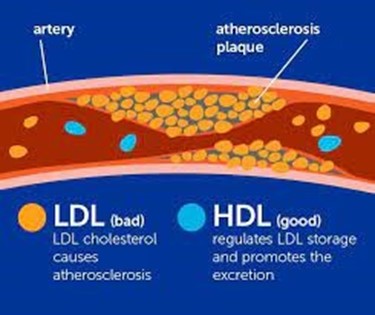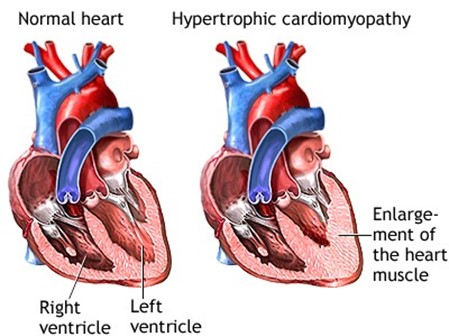Which elevated value may be protective of the development of atherosclerosis
Very low density lipoproteins VLDL
Low density lipoprotein LDL
High density lipoprotein HDL
Triglycerides TGs
The Correct Answer is C
Atherosclerosis is a disease in which fatty deposits (plaques) build up in the walls of arteries, leading to narrowing and reduced blood flow. Elevated levels of certain lipids, including low density lipoprotein (LDL) cholesterol and triglycerides, are well-established risk factors for the development of atherosclerosis. 
In contrast, high density lipoprotein (HDL) cholesterol has been shown to have a protective effect against atherosclerosis. HDL is often referred to as "good cholesterol" because it helps to transport excess cholesterol from peripheral tissues (including the walls of arteries) back to the liver for processing and excretion. HDL also has anti-inflammatory and antioxidant properties that may help to reduce the risk of atherosclerosis.
In general, higher levels of HDL cholesterol are associated with a lower risk of cardiovascular disease and atherosclerosis. However, the protective effect of HDL may vary depending on other factors such as smoking, obesity, and diabetes. It is important to maintain a healthy balance of lipids in the bloodstream, including a high level of HDL and low levels of LDL and triglycerides, in order to reduce the risk of atherosclerosis and other cardiovascular diseases.
Nursing Test Bank
Naxlex Comprehensive Predictor Exams
Related Questions
Correct Answer is A
Explanation
Cystic fibrosis is a genetic disorder caused by mutations in the CFTR gene, which is inherited in an autosomal recessive manner. This means that a child must inherit two copies of the mutated gene (one from each parent) to develop the disorder. If only one parent carries a copy of the mutated gene, their children will not develop cystic fibrosis but may be carriers of the gene.
Correct Answer is C
Explanation
Hypertension, or high blood pressure, is a major risk factor for the development of left ventricular hypertrophy (LVH), which is characterized by thickening of the myocardium (heart muscle). LVH occurs in response to increased afterload (the resistance the heart has to pump against), which is a common feature of hypertension.

Angiotensin II, a hormone that is activated in response to hypertension, is a major mediator of LVH in this setting. Angiotensin II causes vasoconstriction (narrowing of blood vessels) and promotes the retention of salt and water, which increases blood volume and pressure. Additionally, angiotensin II stimulates the proliferation of cardiac myocytes (heart muscle cells) and the synthesis of extracellular matrix proteins, leading to hypertrophy and fibrosis of the myocardium.
Other factors that may contribute to LVH in hypertension include increased sympathetic nervous system activity, oxidative stress, and inflammation. However, angiotensin II is considered a key mediator of this process, and drugs that block the renin-angiotensin-aldosterone system (RAAS), such as angiotensinconverting enzyme (ACE) inhibitors and angiotensin receptor blockers (ARBs), are often used to treat hypertension and reduce the risk of LVH and other cardiovascular complications.
Whether you are a student looking to ace your exams or a practicing nurse seeking to enhance your expertise , our nursing education contents will empower you with the confidence and competence to make a difference in the lives of patients and become a respected leader in the healthcare field.
Visit Naxlex, invest in your future and unlock endless possibilities with our unparalleled nursing education contents today
Report Wrong Answer on the Current Question
Do you disagree with the answer? If yes, what is your expected answer? Explain.
Kindly be descriptive with the issue you are facing.
